|

|
GIFiply: Increasing the compressibility of GIF images
In part 1 of my Ph.D. research, I've developed a image processing
technique which increases the compressibility of images using
Lempel-Ziv based algorithms. One algorithm of particular
importance is the GIF image format which dominates data on the
web today. This approach can reduce data requirements by up to 40%
with virtually no visual loss. Further this approach can be combined
with existing GIF reduction techniques to yield images which are
as much as 60% smaller, yet still virtually indistinguishable
from the originals.
|
JPEG Blocking artifact removal
At high compression levels, the quantization of DCT coefficients
used by the JPEG image format results in "blocking" artifacts. I have developed
a method for reducing those artifacts by creating a new smooth basis which can
recover non-blocky image from the same quantized DCT coeffients.
|
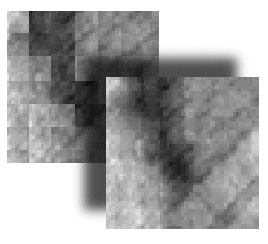
|

|
Poxels: Probablistic Voxel Reconstruction
In this project I examined the problem of reconstructing a
voxel representation of 3D space from a series of 2D or 1D projections
of the space. We reconstruct the 3D space by optimizing over the probability
that each voxel is visible in each of the projections. An iterative
algorithm is used to find the optimal probability distibution which
jointly explains all the observed projections.
|
Lempel-Ziv differential coding (LZd)
I've developed a dictionary based universal compression
scheme which is able to use approximate string matches to compress
data such as sounds and images in which sequences of symbols are rarely
repeated exactly, but are often repeated approximately.
|

|

|
Probabilistic Texture Synthesis
The textures within this web space were synthesized with a
multiresolution sampling procedure which I have developed. In
the first part of a two phase process, an orignal input texture is
analyzed to produce a probability density estimator for the 'true'
distribution from which it was generated. In the second phase, a
new texture is synthesized by sampling each spatial frequency
band from this density estimator. The final synthesized texture is
then created by combining these spatial frequency bands.
|
Texture Based Segmentation
By building up the flexible histograms texture matching
technique developed in my master's
thesis I have developed texture driven segmentation. Examples
include segmentation of target vehicles in synthetic aperature
radar (SAR), and anatomical structures from magnetic resonance
imagery (MRI)
|

|

|
Distributions From Images
In this talk I describe a technique for modeling images by
attempting to approximate such distributions directly. These
approximations capture the texture characteristics within images,
using an image representation which measures the joint occurrence of
features across spatial resolutions.
An image classification system can be designed using a similarity
metric based on the likelihood that the distribution derived from one
image could have generated another. Classification of natural textures
indicates a high level of specificity, and recent results on target
detection in SAR imagery are encouraging.
|
Structure Driven Image Regisration
Because of its ability to provide a representation which is
generally robust to the speckle in synthetic aperatiure radar
(SAR) imagery, the flexible histograms texture matching technique
developed in my master's
thesis can be used as core matching metric for a SAR image
registration system.
While working on this project during the summer of 1997 at MIT and
Alphatech, Inc.
I developed such a system.
|

|
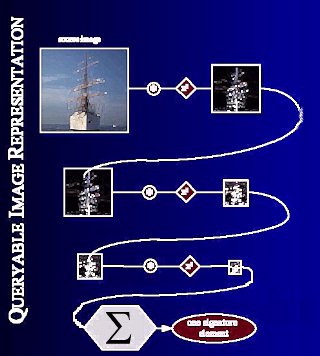
|
Queriable Image representations
I am currently working on techniques for automatic retrieval
from images databases. I developed a representation of images
which Uses a complex set of filter-networks to capture the
structure within a group of example images, and then use that to
find similar images in a database.
|
Reconstructing Polyhedra From Hand-Drawn Sketches
I have built a system which can robustly
reconstruct the 3D structure of rectangular polyhedra from
haphazardly hand drawn sketches.
|
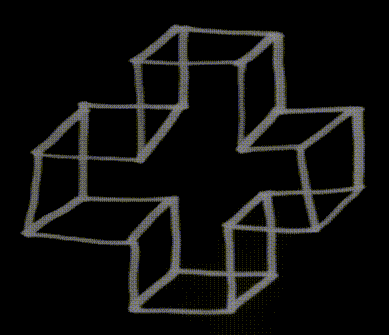

|
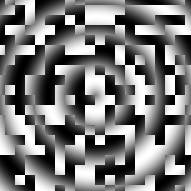
|
Human Visual Psychophysics
During my final year at Columbia
Engineering I became
interested in studying the human visual system as a means of learning
what kinds of mechanisms we employ which allow us to seemingly
effortlessly make sense of the visual world around us.
|
Multiple Person Tracking
In the
Human Computer Interface (HCI) project
at the
MIT Artificial Intelligence Laboratory
I have developed a system to track the locations of room occupants
simultaneously in 2 cameras and use that information to recover their 3D position.
This information is used by many HCI room functions. It is also directly used
within a tracking subsystem to direct mobile narrow-focus cameras to 'foviate' on
particular occupants, and determine which of several camera views provides the
most 'useful' view for recording.
|
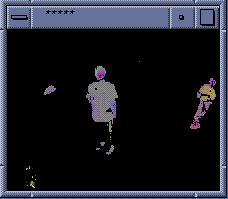
|
Page loaded on January 14, 2025 at 07:18 AM.
Page last modified on
2006-05-27
|
Copyright © 1997-2025, Jeremy S. De Bonet.
All rights reserved.
|
|












